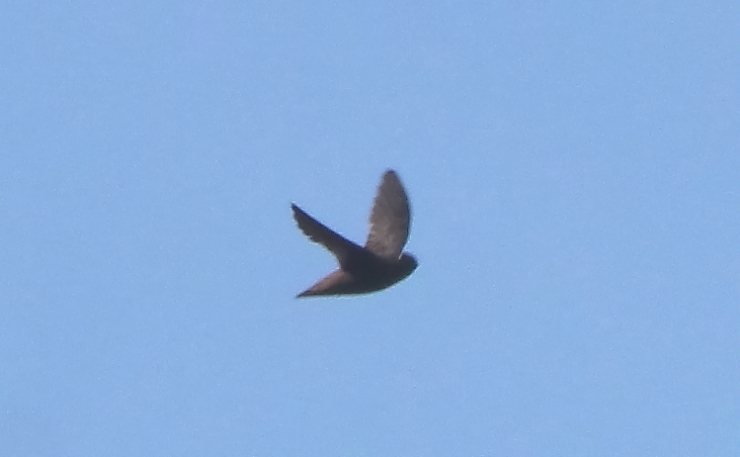
Down here in Mexico, many of the longest life lists belong to full- or part-time birding guides. Now, I’m no professional, but I am more than happy to take people to meet the wonderful birds of this country’s southwest. I have never received any pay for doing so, nor do I plan on taking any pay in the future. But sometimes I benefit in other ways.
Just two weeks after taking my friend Alberto “Chivizcoyo” to the subtropical town of Paso Ancho to look for Sinaloa Martins, another birder from the same forum/chat contacted me to see about making the same pilgrimage. I didn’t know it at the time, but René is the #3 birder on eBird’s all-time “Top 100” list for Mexico. And Ricardo, who is #4 on the same list, would be accompanying him. I was to be in the company of birding royalty.
An ever-so-humble note: Numbers 1 and 2 on that list have stayed in our home, and have also gone with me to Paso Ancho. A more-genuinely-humble note: I am currently at #572 on the same list. The thing is, you can’t reach the birding stratosphere without shirking off all earthly attachments, and doing nothing but travelling the country looking for “just one more species”. I, in contrast, have a day job, and a family.
René and Ricardo were, in fact, looking for exactly the same two species Alberto had come to find, no more, no less. Alberto had travelled two hours east of Morelia one day to find the White-fronted Swift, and one hour southwest of Morelia the next day to see the Sinaloa Martin. (He found both.) René and Ricardo planned to do both in a single day: the Martin in the morning, and the Swift in the evening. I will admit, I had my doubts.
In fact, I had never seen the Sinaloa Martin twice in a single year, although that is probably because I just don’t make that rather-arduous trip all that often. But, just as with Alberto, it rained the night before, and I was guardedly hopeful.
I needn’t have worried. I told them to watch for a certain trio of power/telephone lines, and there they were: 50 Sinaloa Martins! Two Red-breasted Chats sang from the trees, one a male just developing his red breast, and the other all the way there already. A pair of Black-chested Sparrows, a species which René had only seen once before, flew across the road. Yellow-winged Caciques and Golden-cheeked Woodpeckers created a raucous chorus.
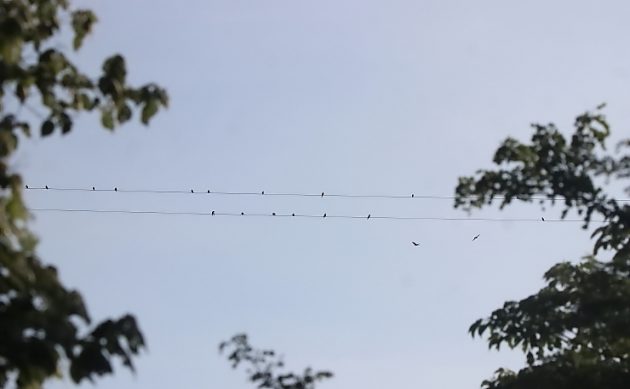
Yes, Virginia, that is a large number of Sinaloa Martins.
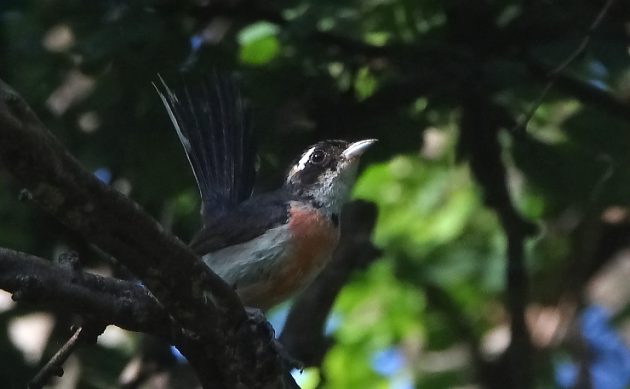
This male Red-breasted Chat was just a teenager. But he clearly felt that he was really something.
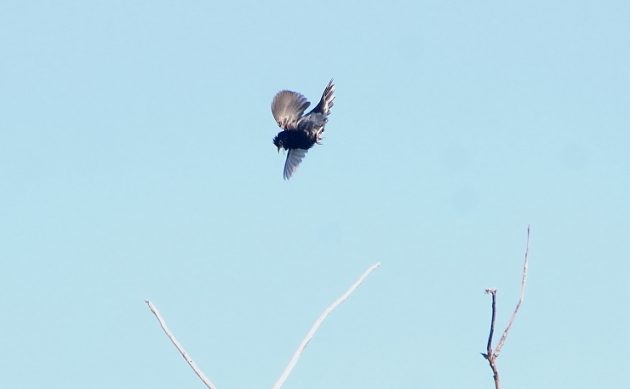
Blue-black Grassquits are just little bitty things. But their classic song-jump move suggests they, too, think they are really something.
Now, before I continue with this story, I should clarify that I had never seen my new friends’ second target species, the White-fronted Swift. This bird is so difficult that it had only been reported on eBird 27 times, as of the day of our trip. I had briefly considered travelling on with René and Ricardo to Tacámbaro to look for it, in spite of what a grueling day that would make. But, as I said before, I have a day job, and a family.
So there we were, trying to get ever-better shots of the Martins, when an unexpected shape darted overhead. I had already warned them that Chestnut-collared Swifts were fairly common at this site. But we started to wildly attempt to take photos of this one, just to be sure.
There are few birding tasks as frustrating as attempting to photograph a swift. They never perch; in fact, they are physically incapable of doing so. Their flight is very fast, and rarely in a straight line. And they tend to fly very high. I have often noticed swifts when looking at soaring birds of prey. In fact, my best option is often to get the camera to focus on the larger raptor, and then click at the swifts before it tries to refocus.
Fortunately, this swift chose to fly much lower than most do. Unfortunately, it was constantly flying behind the trees. And yet, somehow, both René and I managed to get some sort of photos of it, before it moved on.
A quick check at our viewfinders left no doubt, this Swift had no Chestnut-collar. We checked our guides, and our pulse quickened. René managed to send his best image to the very same Alberto, and… OMG… it was a White-fronted Swift! First for René, first for Ricardo, first for me, first for Paso Ancho.
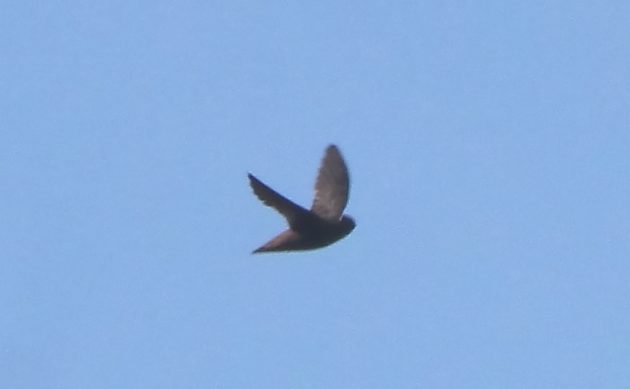
René’s best photo was better than this one of mine, believe you me.
Somewhat later in the morning, we saw some more swifts in the distance. (We were, of course, a bit swift-crazy at this point.) You remember what I said about focusing on swifts? Well, here you go, courtesy of a friendly neighborhood Short-tailed Hawk:
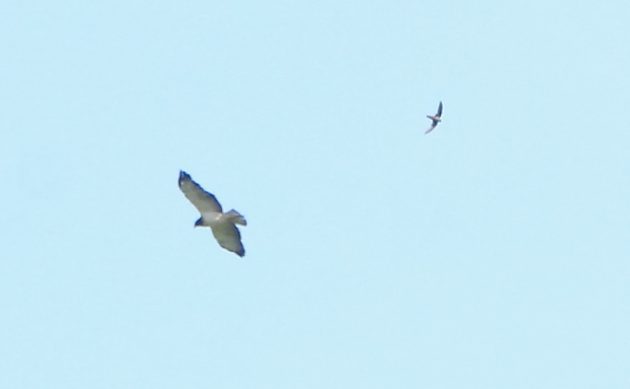
While these swifts turned up at a great distance, I could just see the chestnut collars on a pair of adults, and the extra-long tails on a pair of immatures. One more species for the day… the Chestnut-collared Swift. But our lifer White-fronted Swift would continue to stand (fly?) alone.
Some of the scenery was pretty cool, too.



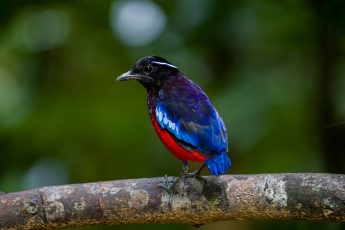

 New writers welcome – please contact us for details.
New writers welcome – please contact us for details.

















Leave a Comment